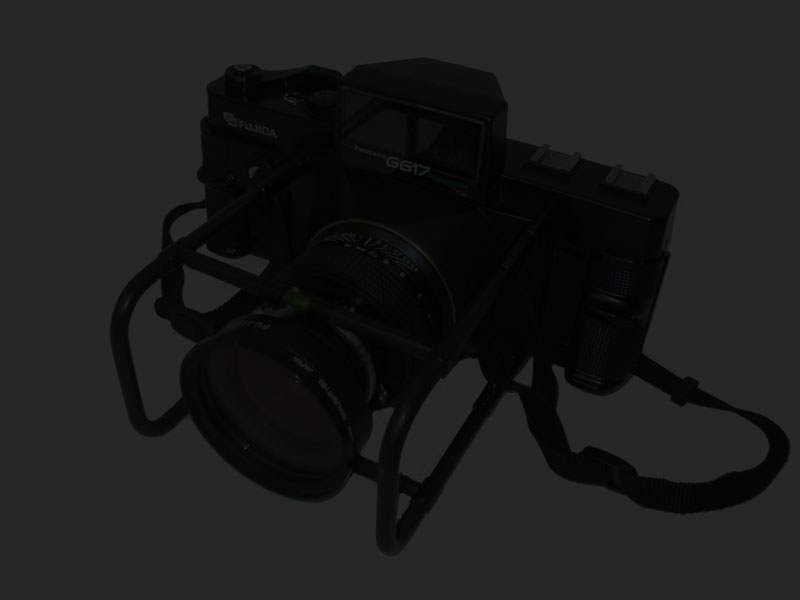

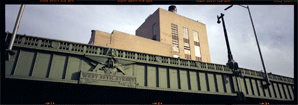

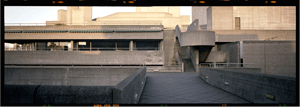
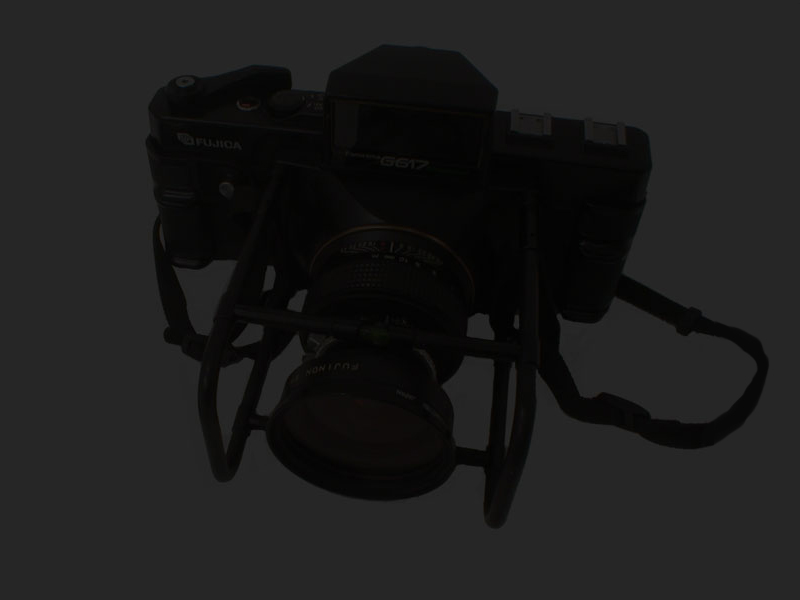
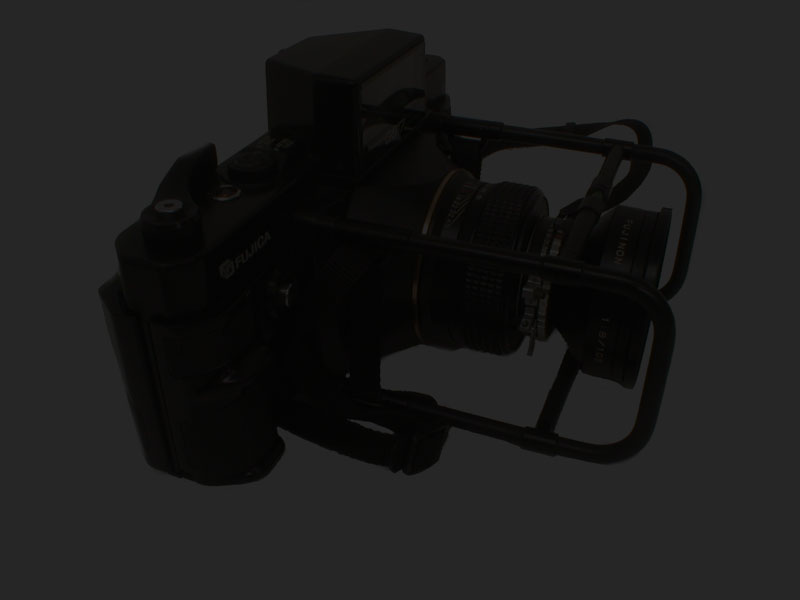
All the photographs
on this website were taken with a Fujica G617 Professional panoramic camera.
A 21 year old camera that is so different from the sort of equipment most
people are familiar with I thought I might describe its method of operation.
First load the
film: the 617 is a fixed lens, medium format camera and uses 120 roll film.
Loading is a manual process but not difficult, just awkward sometimes, trying
to keep bright light from fogging the film when reloading under the sun. The
G617 takes four shots on each roll of 120 film; there’s a lot of film
changing.
Having seen something
you think you might want to photograph, lift the camera to your eye to assess
what the subject looks like framed. What you see through the viewfinder is,
however, only an approximation of what the lens will see, as this is not an
SLR camera and the viewfinder is just a peephole that is framed by a box that
echoes the format of the camera.
Next take your
exposure meter and check the light. You will have already have set the film
speed but in less than ideal conditions it might be necessary to push the
film a stop or two because, unlike most cameras which have shutters which
open to just above or below f.2 and range down to f.22or f.32, the widest
the G617 lens will go to is f.8 and to get any depth of field you will need
to get as close to f.45 as possible. So either you require a lot of light
or high film speeds.
Decide on a shutter
speed. To get a decent exposure it will often need to be quite slow. Bear
in mind that speeds below a 60th of a second will probably betray any camera
shake and there is quite a lot of camera to shake. Set the shutter speed and
aperture. Assess the distance and set the focus. Cock the shutter. Put your
eye to the viewfinder again and compose your shot, remembering to factor in
parallax adjustment for any foreground elements and ensuring that the spirit
level [ yes, there’s a spirit level] is indicating that you are holding
the camera horizontal if you want the horizon to look level on the finished
shot.
20 years ago, when
I started using this camera, it was state of the art but, even then, the light,
quiet, fast SLRs and simple 35mm point and shoot cameras made it seem like
throwback to another age. Just the fact that I had to cock the shutter for
every shot made me feel like the next step ought to have been to set magnesium
powder in the flash tray before ducking under a black cloth to expose a plate.
Despite that, and
despite it’s large size and complicated set up, until now, at least,
I’ve tried to use it as much like a point and shoot camera as possible.
It is a big bulky thing and with a separate light meter, filters and a good
stock of film, represents a fair size bundle to tote around so I rarely travel
with a tripod. Some of the night shots would have required using one but everything
else is hand held using available light . The one exception being a photograph
taken in the Holocaust Tower of the Jewish Museum in Berlin which is illuminated,
in part, by the flash of the woman’s camera in the centre of the shot.
As can be seen in the image, she was standing close up to the junction of
two walls taking photographs of the wall. I don’t know why or who she
was but the fact that she did so provided me with one of my favourite photographs
to date.
This collection
represents a rather arbitrary record of my travels over the last twenty years.
The fact that the primary purpose of those trips was usually work and only
rarely the taking of panoramic photographs, has meant that there are many
sad omissions. I have no decent photographs from the couple of days I spent
in Venice, for instance and not much more from two trips I’ve made to
Cuba. These are two of the most visually fascinating places I’ve visited
and high on my wish list for return visits. On the other hand my work has
taken me to places I would not have otherwise visited and granted me access
to areas and situations I’m happy to have seen and photographed.
I hope looking
at these photographs brings you pleasure and to maximize the chances of that
happening I would suggest that they are best viewed at a screen resolution
of 1280 x 1084. If the images overlap the edge of your screen for a PCgo to:
CONTROL PANEL, then DISPLAY, then SETTINGS and move the slider you see there
to a resolution higher than 1000. On a Mac.go to SYSTEMS PREFERENCES click
on DISPLAYS icon and adjust there. Should you not like the new settings change
back using the same process.
.
The one thing these
pictures lose on a computer screen is the depth of detail such a large negative
can reveal. Their quality is such that these images should look better, when
printed from the neg, as they get larger.
The G617 was a
specialist camera 21years ago, now, in an environment dominated by digital
technology it’s difficult to think of it as anything more than a wonderfully
idiosyncratic example of a technology whose time is accelerating into history.
I have no argument.
I like digital. I’m excited by the possibilities that digital cameras
offer and I have enjoyed the process of scanning these images into my computer
from the original negatives and optimising them in Photoshop.
However, the fact
that there are few things more pleasing to contemplate than a good photographic
image developed using the platinum process should serve as a reminder that
, even when evolving technologies offer general improvements and wonderful
new possibilities, there’s no reason to believe that they will always
match the peak achievements of the methods they supplant. Digital media has
all but replaced film in the mainstream but, until I find something that matches
the qualities of a well exposed, 6cm.x17cm, negative I will continue to carry
my G617. [ and a little digital in my pocket.] for as long as I, or it, holds
out.
I would like to thank Richard Loncraine and Brian Morris for their charity
and forbearance; Jean and Jon at Visions [
www.visionsphoto.co.uk ] and Danny Chau [ www.chaudigital.com]
for all their excellent work over the years. Also, Kevin Heavey [ www.kevinheavey.co.uk
] for his technical knowledge, construction skills and patience.
 |
|||
 |
|||
 |
|||
 |
|||
 |
|||
 |
|||
 |
|||